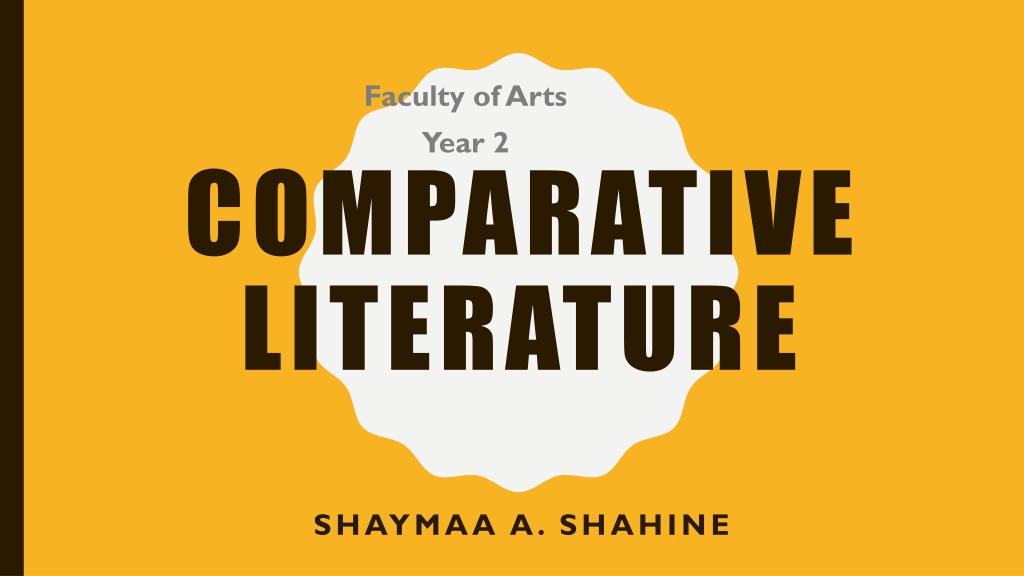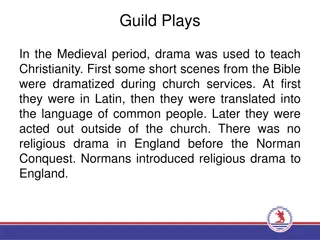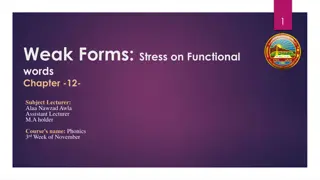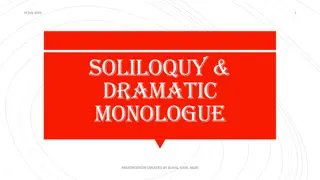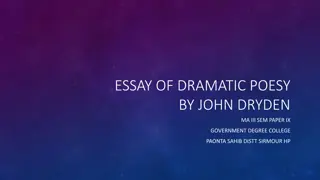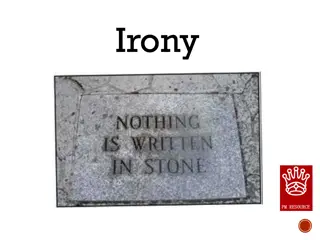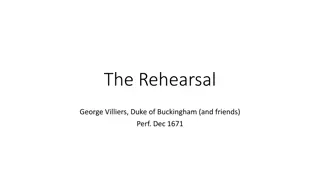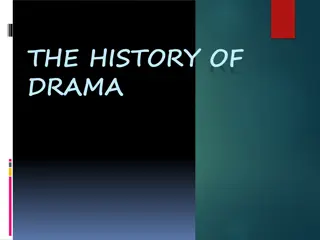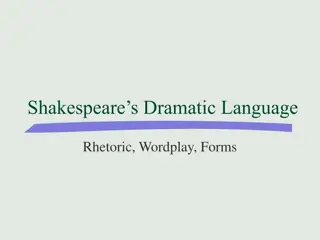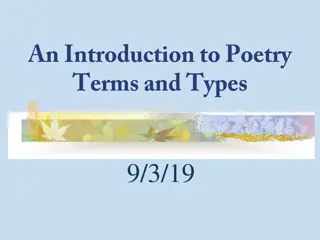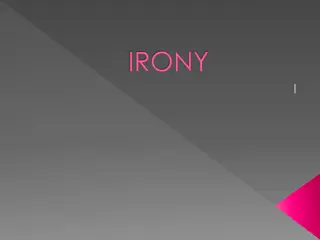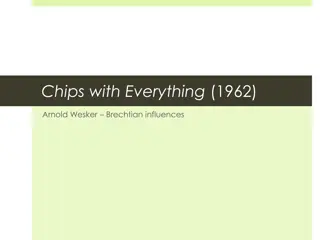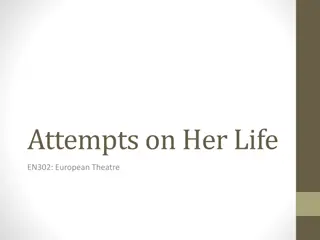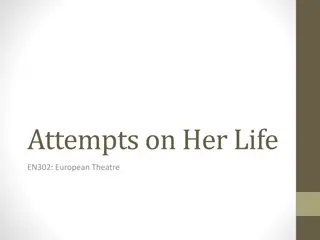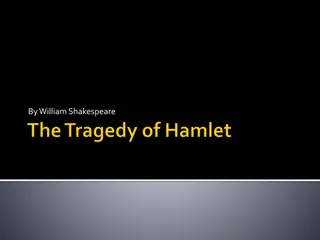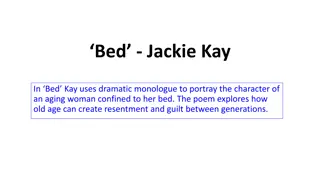Exploring Dramatic Forms: From Burlesque to Well-Made Plays
Dive into the world of dramatic forms, where Burlesque emerged in Medieval Drama and was revived in the Seventeenth Century to satirize serious works. Learn about high burlesque that parodies literary works like Alexander Pope's "The Rape of the Lock" and low burlesque that mocks serious subjects. Discover the characteristics of melodrama and well-made plays, including their plot construction and thematic evolution over time.
Download Presentation

Please find below an Image/Link to download the presentation.
The content on the website is provided AS IS for your information and personal use only. It may not be sold, licensed, or shared on other websites without obtaining consent from the author. Download presentation by click this link. If you encounter any issues during the download, it is possible that the publisher has removed the file from their server.
E N D
Presentation Transcript
Faculty of Arts Year 2 COMPARATIVE LITERATURE SHAYMAA A. SHAHINE
CODES OF CONDUCT Phones are not allowed Start 10.30 to 12 p.m. Doors closes 10.40 Inside CLASS, you are allowed to drink water, eat what you have, go to Toilet, go out to use your phone (PLEASE DON T CAUSE DISTURBANCE) What is in it for you? Listening, Reading and Critical thinking Volunteers for Reflection Tree Volunteers for Question Bank
DRAMATIC FORMS
Burlesque emerged in the Medieval Drama . It was revived in the Seventeenth Century, and became popular and remained so for a long time. is a literary, dramatic or musical work intended to cause laughter by caricaturing the manner or spirit of serious works Burlesque overlaps in meaning with caricature,parody, mock-heroic The term burlesque has been applied retrospectively to works of Chaucer and Shakespeare and to the Graeco-Roman classics 17th and 18th century burlesque was divided into two types:High burlesque refers to a burlesque imitation where a literary, elevated manner was applied to a commonplace or comically inappropriate subject matter as, for example, in the literary parody and the mock-heroic. One of the most commonly cited examples of high burlesque isAlexander Pope's "sly, knowing and courtly" The Rape of the Lock.[13]Low burlesque applied an irreverent, mocking style to a serious subject; an example is Samuel Butler's poem Hudibras, A melodrama is a drama subgenre in which the plot, which is typically sensational and designed to appeal strongly to the emotions, takes precedence over detailed characterization. Characters are often simply drawn, and may appear stereotyped as totally good in nature or totally villain. melodramas turned to more domestic themes and later gave way to realism before succumbing to cinema and subsequently television.
A Well-made play: Is a neatly efficient play in the construction of its plot but superficial in ideas and characterization. In 19th-century France, the term ( pi ce bien faite ) at first had a more positive sense, denoting the carefully constructed suspense in comedies and melodramas by Eug ne Scribe ( 1791 1861 ) and his follower Victorien Sardou ( 1831 1908 The aim was to provide a constantly entertaining, exciting narrative which satisfyingly resolved the many complications and intrigues that drove the story. is characterized by: a secret known only to some of the characters and usually shared with the audience , one character trying to keep it hidden or another trying to uncover it. Initial exposition is normally followed by ups and downs The action moves predictably to a logical end It soon took on a pejorative meaning, and came to be used ironically of all plays in which the action develops artificially, according to the strict laws of logic and not to the unpredictable demands of human nature; and in which the plot, to which the characters are completely subordinated, is conceived in terms of exposition, knot, and denouement As this tradition was displaced by the more serious concerns of dramatic naturalism , the term acquired its dismissive sense, especially in the critical. Ibsen and other dramatists of the later 19th century (August Strindberg,Gerhart Hauptmann, mile Zola,Anton Chekhov) built upon its technique of careful construction and preparation of effects in the genre problem play. The well-made play was a popular form of entertainment and moved to Fiction world Agatha Christie'sThe Mousetrap
Farce (the word is derived from French farce , literally stuffing ) A form of popular comedy with its distant roots in the improvisations which actors introduced into the text of Medieval Religious Dramas is a form of low comedy designed to provoke laughter through highly exaggerated caricatures of people in improper or silly situations. Farce is characterized by stereotypical characterizations improbable plot lines Physical humor, Sexual misunderstanding The use of deliberate absurdity or nonsense, and verbal humor. It is also often set in one particular location, where all events occur.
A problem play is a form of drama that emerged with Shakespeare in the Jacobean age. It was revived in the 19th century as part of the wider movement of Realism in the arts, especially following the innovations of Henrik Ibsen. It deals with contentious social issues through debates between the characters on stage, who typically represent conflicting points of view within a realistic social context
NINETENTH NINETENTH CENTURY DRAMA IN CENTURY DRAMA IN EGYPT EGYPT Farce Melodrama Translated versions of European dramatic masterpieces Ahmed Shawqi, "Prince of Poets," who during his latter years penned a number of verse dramas with themes from Egyptian and Islamic history: Masraa' Kliyubatra (The Death of Cleopatra, 1929) Majnun Layla (Driven mad by Layla, 1931) Amirat el-Andalus (TheAndalusian Princess, 1932) Ali Bey al-Kebir(an 18th-century ruler of Egypt) There was a void in the literary scene
REFERENCES: REFERENCES: Brockett, Oscar G. and Franklin J. Hildy. 2003.History of the Theatre. Ninth edition, International edition. Boston: Allyn and Bacon.
